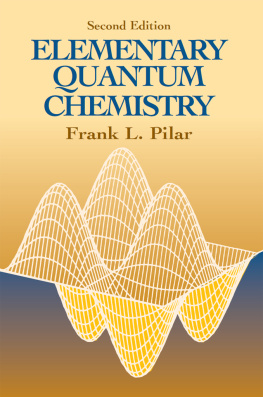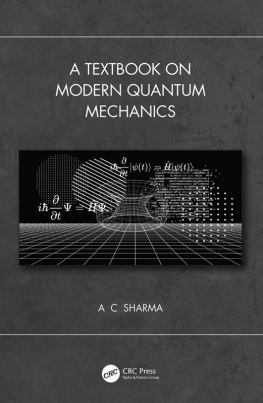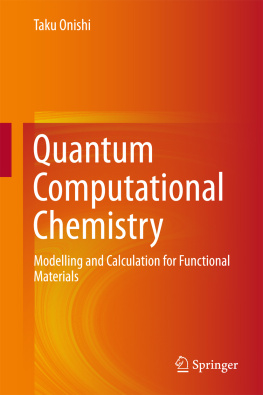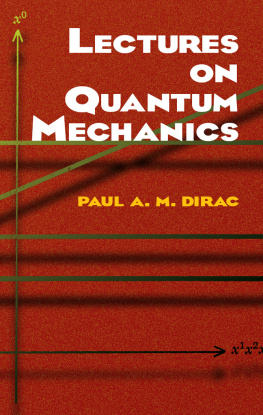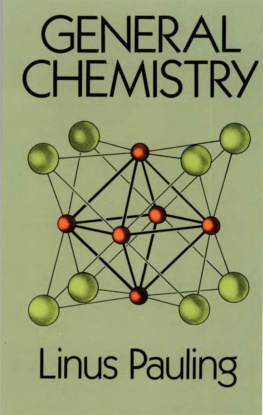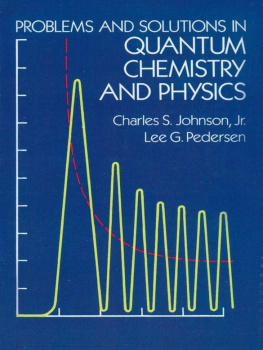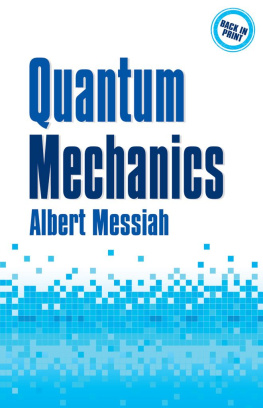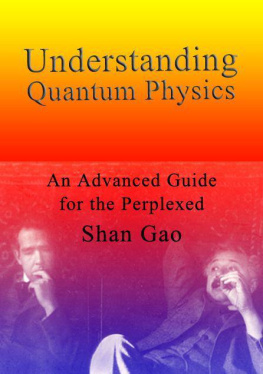Elementary
Quantum Chemistry
1 &
2 '
3 <
4 >
5 ^
6 |
7
8
9
10
11
12
13
14
15
16
17
18
19
20
21
22
23
24
25
26
27
28
29
30
31
32
33
34
35
36
37
38
39
40
41
42
43
44
45
46
47
48
49
50
51
52
53
54
55
56
57
58
59
60
61
62
63
64
65
66
67
68
69
70
71
72 ||
73
74
75
76
77
78
79
80
81
82
83
84
85
86 
87
88
89
90
91
92
93 |
94
95
96
97
98
99
100 
101 
102
103
104
105...
106
107
108 &
109
110
111
112
113
114
115
116
117 >
118 <
119 "
Elementary
Quantum Chemistry
Second Edition
Frank L. Pilar
Professor Emeritus of Chemistry
University of New Hampshire
DOVER PUBLICATIONS, INC.
Mineola, New York
Copyright
Copyright 1968, 1990 by Frank L. Pilar
All rights reserved.
Bibliographical Note
This Dover edition, first published in 2001, is an unabridged republication of the second edition, originally published by McGraw-Hill Publishing Company, New York, in 1990.
Library of Congress Cataloging-in-Publication Data
Pilar, Frank L.
Elementary quantum chemistry / Frank L. Pilar.Dover ed.
p. cm.
Originally published: New York : McGraw-Hill Pub., 1990.
Includes bibliographical references and index.
ISBN 0-486-41464-7 (pbk.)
1. Quantum chemistry. I. Title.
QD462 .P55 2001
541.28dc21
00-050464
Manufactured in the United States by Courier Corporation
41464703
www.doverpublications.com
ABOUT THE AUTHOR
Frank L. Pilar received B.S. and M.S. degrees from the University of Nebraska (Lincoln) in 1951 and 1953, respectively, and a Ph.D. from the University of Cincinnati in 1957. Between 1953 and 1955 he was a research chemist at the Standard Oil Company (Indiana), where he worked on Ziegler-Natta olefin polymerization. Since 1957 he taught at the University of New Hampshire and served as chairman of the chemistry department from 1982 to his retirement in 1992. Since retirement he has devoted his activities to town government and to volunteer trail work with the Appalachian Mountain Club.
Dedicated to those former undergraduate and graduate students at the University of New Hampshire who shared my interests in quantum chemistry: M. Donald Jordan, Jr., John R. Morris, III, Larry Siegel, James J. Eberhardt, Mark Springgate, James D. Quirk, Donald R. Land, John R. Sabin, Robert H. Carrier, Frank Block, and Shu-jun Su.
CONTENTS
PREFACE
Elementary is often used to denote a level at which one is exposed superficially to a body of knowledge which will probably never be used again. The term, as used here, implies the lowest level of completeness and sophistication necessary in order for the chemist to acquire the competence needed to begin a serious, nontrivial understanding of the research literature of the late twentieth centurya research literature in which quantum concepts are playing an ever-increasing role.
Experimental chemists have progressed well beyond the point of studying the average behavior of reacting species described by the Arrhenius rate equation and are beginning to probe the step-by-step behavior of individual atoms and molecules as they collide, form transition states, and ultimately form products. Such experiments are generally assisted by sophisticated quantum mechanical calculations of potential-energy surfacescomputations which help to fill gaps in observation and which assist in the interpretation of what is observed. Similarly, organic and inorganic chemists are studying increasingly sophisticated aspects of molecular behavior (e.g., photodissociation), the understanding of which requires a much deeper insight into quantum theory than provided by the hand-waving treatments of the past. As Fritz Schaefer has pointed out, theory has become accepted by organic, inorganic, and physical chemists as a legitimate tool for the study of legitimate chemical problems. Although this text stops far short of describing the level of computations and concepts needed in all such studies, it does attempt to provide a suitable foundation upon which expertise in such endeavors can be built.
The author has taught the material in this text to advanced undergraduate students and to beginning graduate students. At the undergraduate level it is sometimes necessary (particularly in a one-semester course) to limit oneself to only the simpler aspects of a topic and to spend less time on details of mathematical formalism, molecular symmetry, and molecular orbital calculations. It is assumed that the student has had mathematics through calculus and at least one year of undergraduate physics taught on the basis of calculus. A background in differential equations, linear algebra, and modern (or atomic) physics is very helpful but not absolutely essential. Mathematical and physical material not necessarily assumed to be part of the students backgroundand which may be useful to some as a reviewis supplied in a number of appendixes. The first edition worked most of these right into the text material itself; I hope the change wont tempt some students to forgo these topics entirely.
The present edition differs from the first in two very important aspects: first, rather than being derived entirely from the published works of others, many features of atomic and molecular structure are illustrated by calculations carried out specifically for this text; second, there are a number of computergenerated diagrams (e.g., so-called three-dimensional, or surface, orbital plots) which I have also constructed personally. Furthermore, all these computations and graphics can be reproduced by students using relatively modest computational facilities and readily available programs and software, e.g., GAMESS, Gaussian 88 (and previous versions), and RS/1. Some calculations can even be done on microcomputers such as the IBM PC (or compatibles) and the Macintosh seriesor even on an Apple II, II+, IIe, IIc, IIGS, or various other popular micros.
I am constantly aware of what a huge debt I owe to the sources of much of my material: the numerous books, journals, and technical reports I have readand perhaps most important of all, the very inspiring teachers and colleagues I have had. Those who have influenced me to a special degree deserve at least my explicit thanks: Prof. Hans H. Jaff (University of Cincinnati), my first teacher in quantum chemistry; Prof. Per-Olov Lowdin (Uppsala University and University of Florida), who influenced my philosophical approach to quantum chemistry; Prof. Ruben Pauncz (Technion, Israel Institute of Technology), who gave the clearest, most beautiful lectures I have ever heard in quantum chemistry; Prof. J. de Heer (University of Colorado), whose trenchant wit enlivened some otherwise mundane topics; and the late Charles A. Coulson (Oxford University), who was my gracious host during a pleasant years stay at the Mathematical Institute. Also, in a very special and personal way, I thank my wife, Anita, for her years of loyal support of a project which has benefited her very little in a material way. I also thank my five children for outgrowing the crayon years; this means that the backsides of manuscript pages of the second edition escaped becoming artwork, a fate befalling some of the pages of the first edition.

